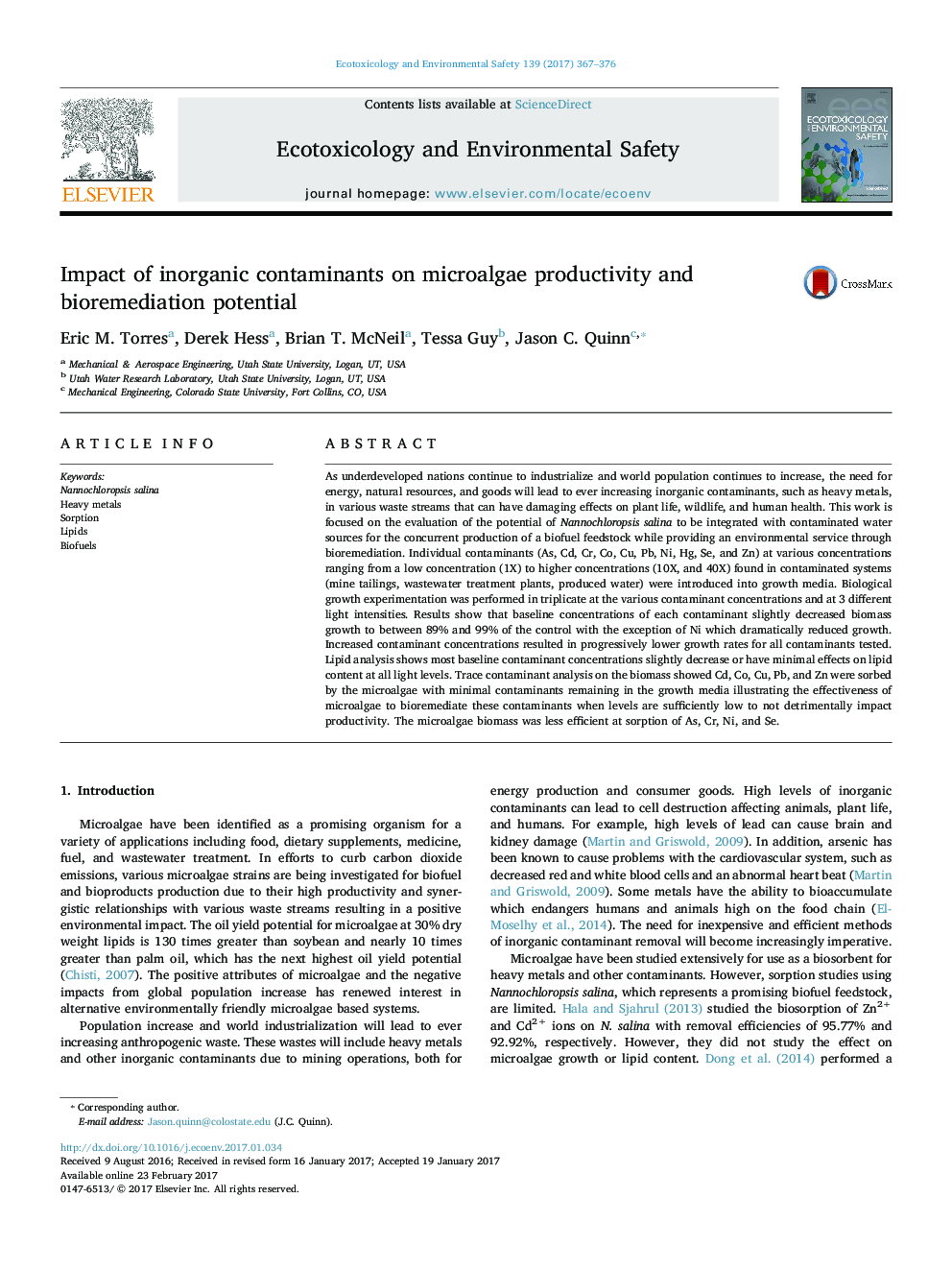| Article ID | Journal | Published Year | Pages | File Type |
|---|---|---|---|---|
| 5747998 | Ecotoxicology and Environmental Safety | 2017 | 10 Pages |
â¢Bioremediation potential of 10 individual contaminants by Nannochloropsis salina.â¢Impact of 10 individual metals on microalgae productivity.â¢Ni and Cu shown to negatively impact productivity.â¢Cd, Co, Cu, Pb, and Zn were effectively sorbed with minimal impacts on productivity.
As underdeveloped nations continue to industrialize and world population continues to increase, the need for energy, natural resources, and goods will lead to ever increasing inorganic contaminants, such as heavy metals, in various waste streams that can have damaging effects on plant life, wildlife, and human health. This work is focused on the evaluation of the potential of Nannochloropsis salina to be integrated with contaminated water sources for the concurrent production of a biofuel feedstock while providing an environmental service through bioremediation. Individual contaminants (As, Cd, Cr, Co, Cu, Pb, Ni, Hg, Se, and Zn) at various concentrations ranging from a low concentration (1X) to higher concentrations (10X, and 40X) found in contaminated systems (mine tailings, wastewater treatment plants, produced water) were introduced into growth media. Biological growth experimentation was performed in triplicate at the various contaminant concentrations and at 3 different light intensities. Results show that baseline concentrations of each contaminant slightly decreased biomass growth to between 89% and 99% of the control with the exception of Ni which dramatically reduced growth. Increased contaminant concentrations resulted in progressively lower growth rates for all contaminants tested. Lipid analysis shows most baseline contaminant concentrations slightly decrease or have minimal effects on lipid content at all light levels. Trace contaminant analysis on the biomass showed Cd, Co, Cu, Pb, and Zn were sorbed by the microalgae with minimal contaminants remaining in the growth media illustrating the effectiveness of microalgae to bioremediate these contaminants when levels are sufficiently low to not detrimentally impact productivity. The microalgae biomass was less efficient at sorption of As, Cr, Ni, and Se.
Graphical abstractDownload high-res image (219KB)Download full-size image
